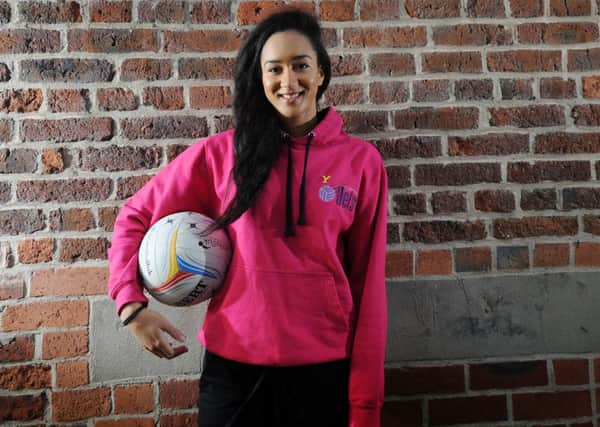Nick Westby: Jets powering netball popularity but other sports need a rethink


The former is a sport I have loved watching for two decades, while the latter is a game I had to admit to the girls giving me the lowdown, I had very little knowledge of.
Both sports were played to healthy attendances over the weekend; 350 were due at West Park Leeds to watch the VarsityBowl between Leeds University Celtics and Leeds Carnegie representing Beckett University, while an even greater crowd – a capacity of 850 at that – sat and watched Yorkshire Jets begin the Netball superleague season against Loughborough Lightning at Sheffield’s English Insitute of Sport.
Advertisement
Hide AdAdvertisement
Hide AdTwo sports; one demanding the toughest of men, the other the finesse of a woman.
But there is one common denominator – they are both sports on the rise.
American football has a thriving amateur scene, to the extent that the two Leeds teams play in a university league alongside 70 other teams.
After graduation, there are dozens more clubs for these students to join in the British senior structure.
Advertisement
Hide AdAdvertisement
Hide AdInterest and participation in American football is bursting through the glass ceiling, and talk of a potential NFL franchise here in the United Kingdom in a few years, can only see it increase further.
Netball, similarly, is enjoying greater exposure than ever before, thanks largely to the spotlight of the Commonwealth Games and the television deal with Sky Sports which sees one game a week screened live.
And the amount of people playing the sport – pictured is Yorkshire Jets’ Brie Grierson – is also on the rise.
According to Sport England’s Active People Survey, there were 148,700 people playing netball between October 2013 and 2014, as opposed to 122,200 in the 12 months prior.
Advertisement
Hide AdAdvertisement
Hide AdConversely though, across the many sports surveyed by the governing body, there were more losers than winners, and overall the decline in sports participation is quite alarming.
Team sports like cricket, rugby union and football – where there are so many outlets for children and adults – are on a constant upward trajectory.
Football has two million protagonists, while cricket and union are closing in on a tenth of that. Athletics and cycling are also growth sports; athletics for the many disciplines and cycling because of the recent drive to get people on their bikes, aided no doubt by the Tour de France’s visit to Yorkshire last summer.
But overall, the number of people participating regularly in sport from October 2013 to October 2014 is down, by 125,000 people to 15.6m.
Advertisement
Hide AdAdvertisement
Hide AdThere are also 121,700 fewer disabled people playing sport regularly.
So much for the London 2012 mantra to ‘Inspire a Generation’.
The expected bump in the wake of that glorious summer has not lasted very long at all – and some sports could suffer at the top because of the drop in numbers towards the bottom.
Swimming looks to be the big loser, even though overall it has the highest participation figures of any sport.
Advertisement
Hide AdAdvertisement
Hide AdThere were nearly three million people swimming regularly in the year after the Games, but that number has fallen by a quarter of a million over the last surveyed period.
The knock-on effect could be a reduction in funding the sport receives, which will affect its chances of producing the next Rebecca Adlington or Hannah Miley.
Other sports like golf, tennis, equestrian, squash, bowls, badminton, basketball and boxing have seen a reduction in the number of people taking part.
Considering the amount of uplifting stories this sporting nation has produced in the last two or three years, the results are surprising.
They also need addressing.
Advertisement
Hide AdAdvertisement
Hide AdWhether it be through cost or time, facilities or opportunity, people have started to turn their back on sport.
It was hardly the legacy we were promised in the build-up to London, but it is not the fault of Sebastian Coe or the organisers that the regular person in the street has not risen to the challenge.
Discovering why has got to be the next step.
Is there a lack of facilities?
Do certain sports cost too much and are therefore exclusive for the wealthy?
Should government be increasing funding, or distributing it more evenly?
Advertisement
Hide AdAdvertisement
Hide AdStriking a balance between success at the top and an even spread at grass roots level is an unenviable task, but there has to be a solution or a compromise.
Sport in its nature is cyclical; there are always form teams and there are struggling clubs, just as there are upwardly mobile sports and sterile games.
But it is the people who make the sporting world go round, and it is they who need to come back.